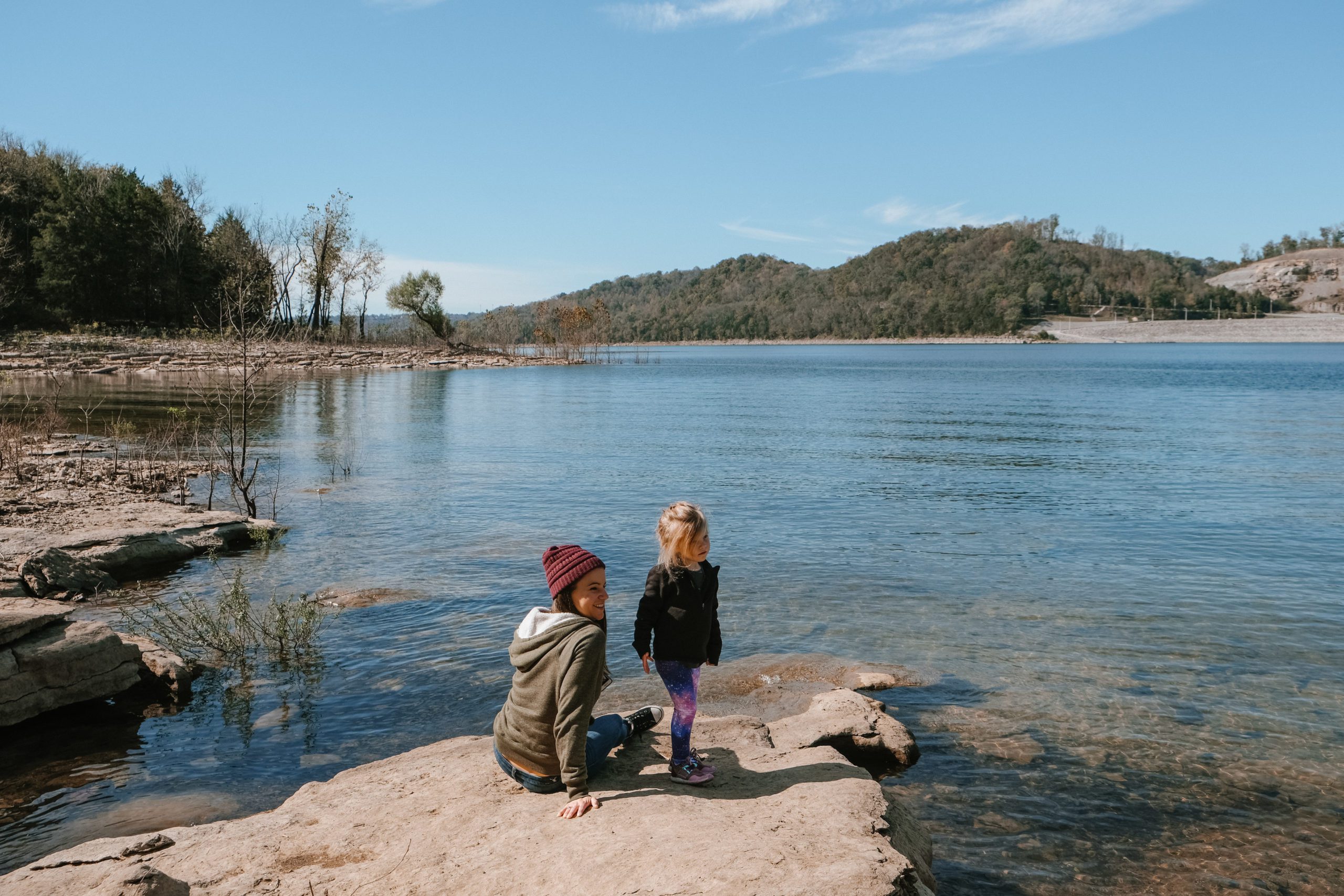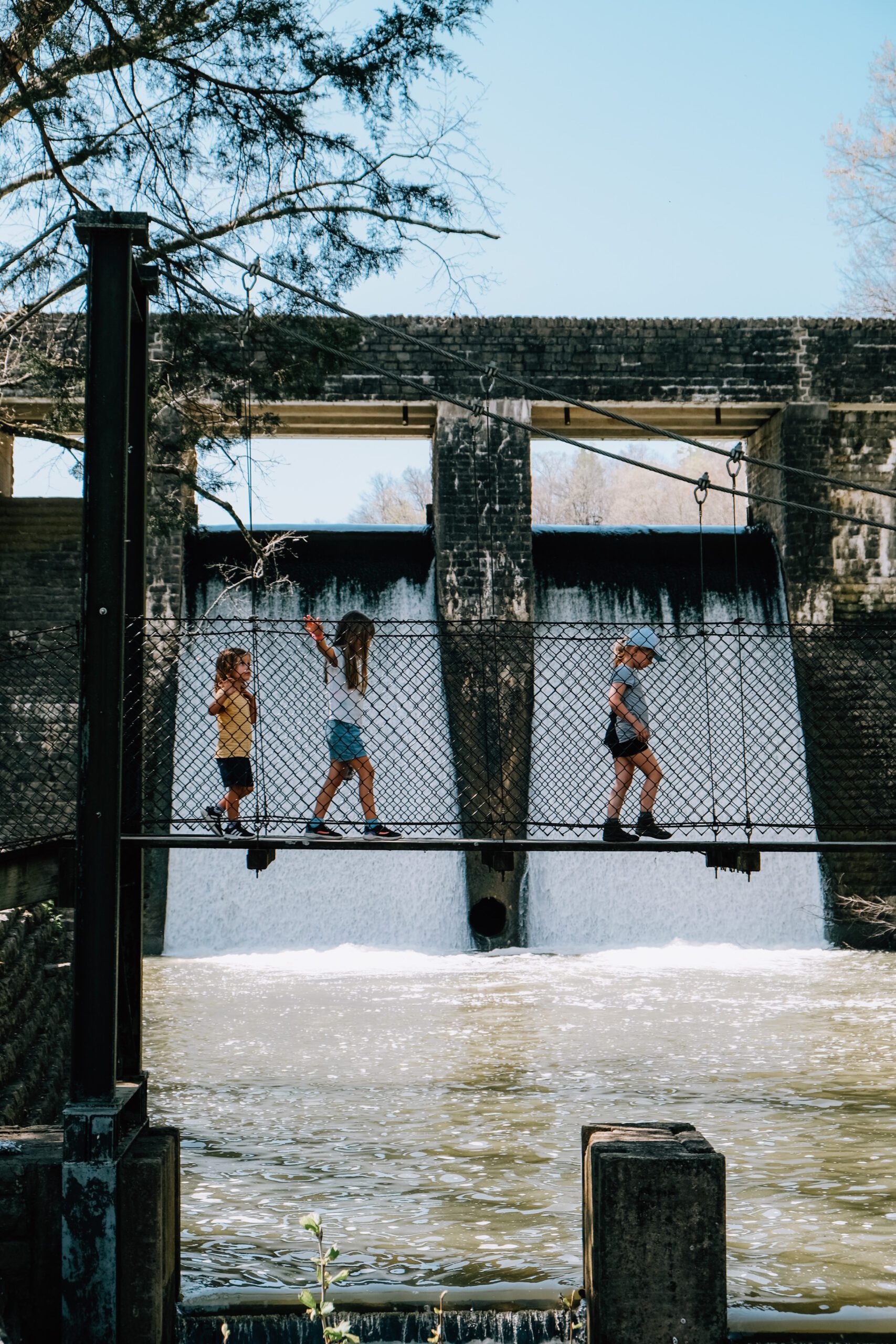
I call the stretch of time between New Year’s and Spring Break “the dead season.” The temperature fluctuates, but it’s usually cold, often cloudy or rainy, and dark all hours outside of work. As a teacher, it’s the longest quarter as we beg for snow days, and if Tennessee’s unpredictable winters don’t give us any, those nine weeks last even longer. I try to fill this time with activities and outings on the weekends to distract from the seasonal depression.
Though I firmly believe that there is beauty to be found in nature during all seasons of the year, I’ve become strategic with our park visits; I seek what I’ll unofficially call the “ideal moment” – that particular time when all the factors (season, weather, light, etc.) are aligned to produce a unique experience that illustrates the very best the environment has to offer. A walk through a meadow is most alluring when spring wildflowers are in bloom; a waterfall-seeking hike through a gorge’s trickling cascades is untenable during a drought or freeze; the impermanence of autumn leaves makes a mountain vista an even more magnificent landscape.
Some parks, though, are so vast and varied that visitors will make their own moments, no matter the forces of nature. Fall Creek Falls State Park, the system’s third largest (at nearly 30,000 acres), is one such destination from which departing visitors won’t leave wishing they’d scheduled their trip for a different time of year.
As one of the system’s six “resort parks” (my own definition, meaning they include a lodge with dining, meeting space, and hotel-style rooms), Fall Creek Falls is truly a destination that accommodates guests of all ages and abilities. And that’s why I chose it for a winter getaway weekend with my parents where we’d be a group ranging in age from 2 to 76. We had booked one of the Landside cabins, a two-bedroom space that offered a full kitchen, dining area, and living room, and was most practical for our party of six.
It’s 120 miles from Nashville to Fall Creek Falls, and an after-work departure on a late-January Friday evening pushes the drive into darkness – the kind of rural darkness that makes a 7pm arrival feel much later than the clock indicates. The park’s location is remote, nearly an hour from its closest interstate. It sits atop a plateau; the roads leading to the park’s entrance climb from grassy flatlands to thickly forested inclines. In the dark, you can’t be quite certain at which altitude you’re sitting. After arriving and settling into our home for the weekend, we enjoyed a cosy family dinner, tucked in the shroud of the surrounding forest, before calling it a night.


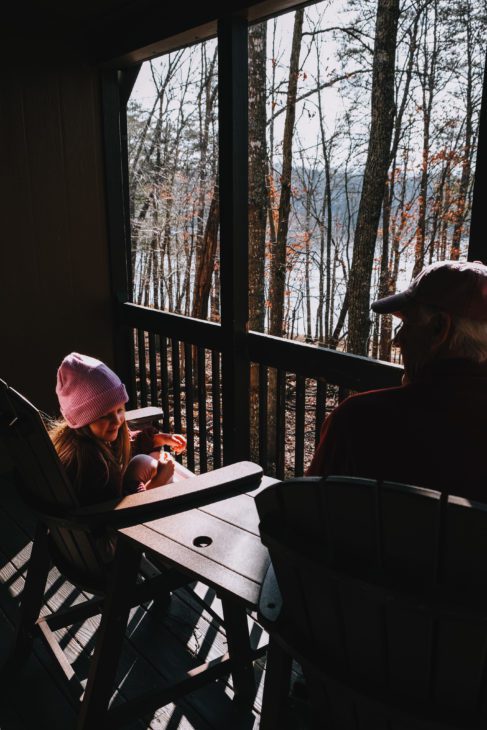
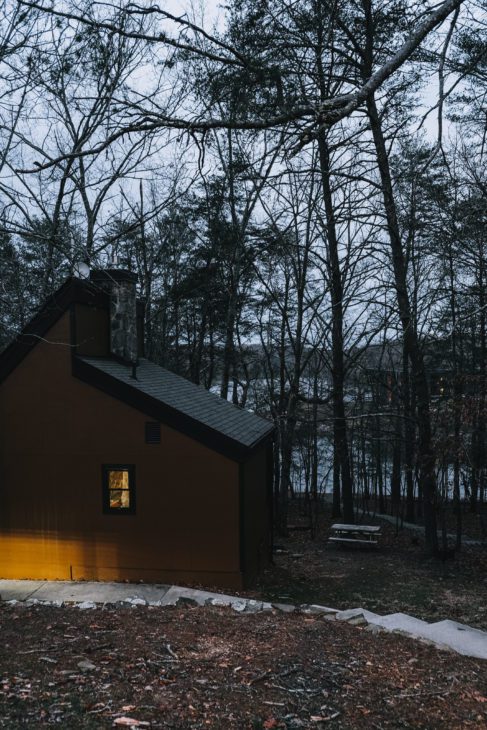


Once the sun rose, though, we were able to get our bearings; the dark emptiness from the night before gave way to a surprising landscape. We were elevated, situated on a ridge across the lake from the lodge. Through the trees, we could see the early morning reflection of light. The temperature was just above freezing, and a morning mist hung heavy on the water’s surface. A paved path hugs the lakeshore, just downhill from the cabins and accessible right outside the door of our home in cabin #3. As the rest of the family eased into the morning, I took a quiet, solitary walk along the water, enjoying the peace and quiet of both a hibernating forest and a momentary escape from my two energetic offspring.
For a natural area as diverse as Fall Creek Falls SP is in its outdoor opportunities (hiking, fishing, rock climbing, biking, boating, golfing), I was surprised to learn that, prior to the park’s development, the area wasn’t a very successful one. The plateaued land had notoriously poor soil, hindering its agricultural development, and, located between the Cane and Piney Creeks, was also prone to frequent flooding. It was so eroded, in fact, that in the mid-1930s, the US government began purchasing the land for a very cheap price with the intent to restore and develop it as public space – it was still a beautiful landscape, afterall. Here the park’s history aligns with many others; the Civilian Conservation Corps and Works Progress Administration provided jobs during the Depression and an outdoor recreation area was born.
The park’s main selling point has always been its namesake falls, plunging 256 feet and clocking in as the highest waterfall east of the Mississippi River. When the National Park Service managed the area in the 1930s and 40s, it was this spectacular attraction that was used to entice visitors to the remote area. Today, Fall Creek Falls is a rare natural wonder accessible to all visitors, no matter their mobility.
After breakfast, we took a drive on Scenic Loop Road, which includes a stop at the Fall Creek Falls Overlook. A paved path brings visitors to an unobstructed (though safely contained) aerial view of the falls. From here, the scenery possesses a tranquility inherent to panoramic landscapes, when a vast perspective projects simplicity. For those wanting a more up-close view, the .35-mile Base of Falls Trail is right around the corner, and that’s where we returned after lunch, with our two-year-old napping and in the care of her grandparents.
The sign at the trail’s turnoff warns it’s a strenuous climb, but it’s the “back up” route you have to worry about. The way down is an easy walk along a well-worn path. A third of the way, the trail switches back and heads towards a large rock wall – the ridge you were standing atop just a few minutes prior. We scrambled over the rocks as the air got heavier with mist, and suddenly the waterfall is thundering into a pool right in front of you. The sound is deafening; the mist envelops you. Here, the view overwhelms the senses, a contrast to the quiet view from above. The experiences are so contradictory, they feel disconnected. But this is the dichotomous nature of…well, nature.







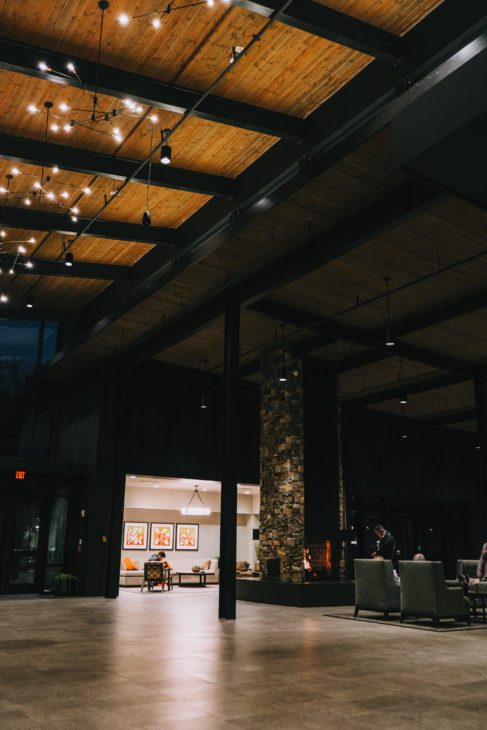
There are days worth of hikes, 56 miles in total, and on a previous visit (years earlier and before kids), we did the Overlook and Woodland Trails – short hikes that include ridgetop views, a swinging bridge, and access to three other falls. In the present, we stuck to Scenic Loop Road and continued exploring its stops later in the afternoon. You can get a nice view down through the valley at Millikans Overlook and explore another of the park’s significant waterfalls, Piney Falls, via trail or drive-up overlook.
After a day of outdoor adventuring, we headed indoors to explore the park’s man-made attractions. The park’s lodge is a brand new construction, completed in 2022, and its high-design modern luxury is befitting the outdoors’ natural magnificence. The main lobby has lofty ceilings with floor-to-ceiling windows and a towering stone fireplace that matches the building’s exterior, bridging the design aesthetic between inside and out. The ceilings are lower for the more private spaces – guest room corridors, meeting rooms, a small library, and the restaurant. We filled our bellies with hearty, well-portioned plates before retiring to our cabin for the night.
I think most people would look at pictures of the lodge and be surprised to learn it’s part of a publicly-funded state park system – it’s all so grand and well-designed. It’s indicative of a serious investment in our parks – and is earning our state major bragging rights (for once) as I share our adventures with out-of-state friends!
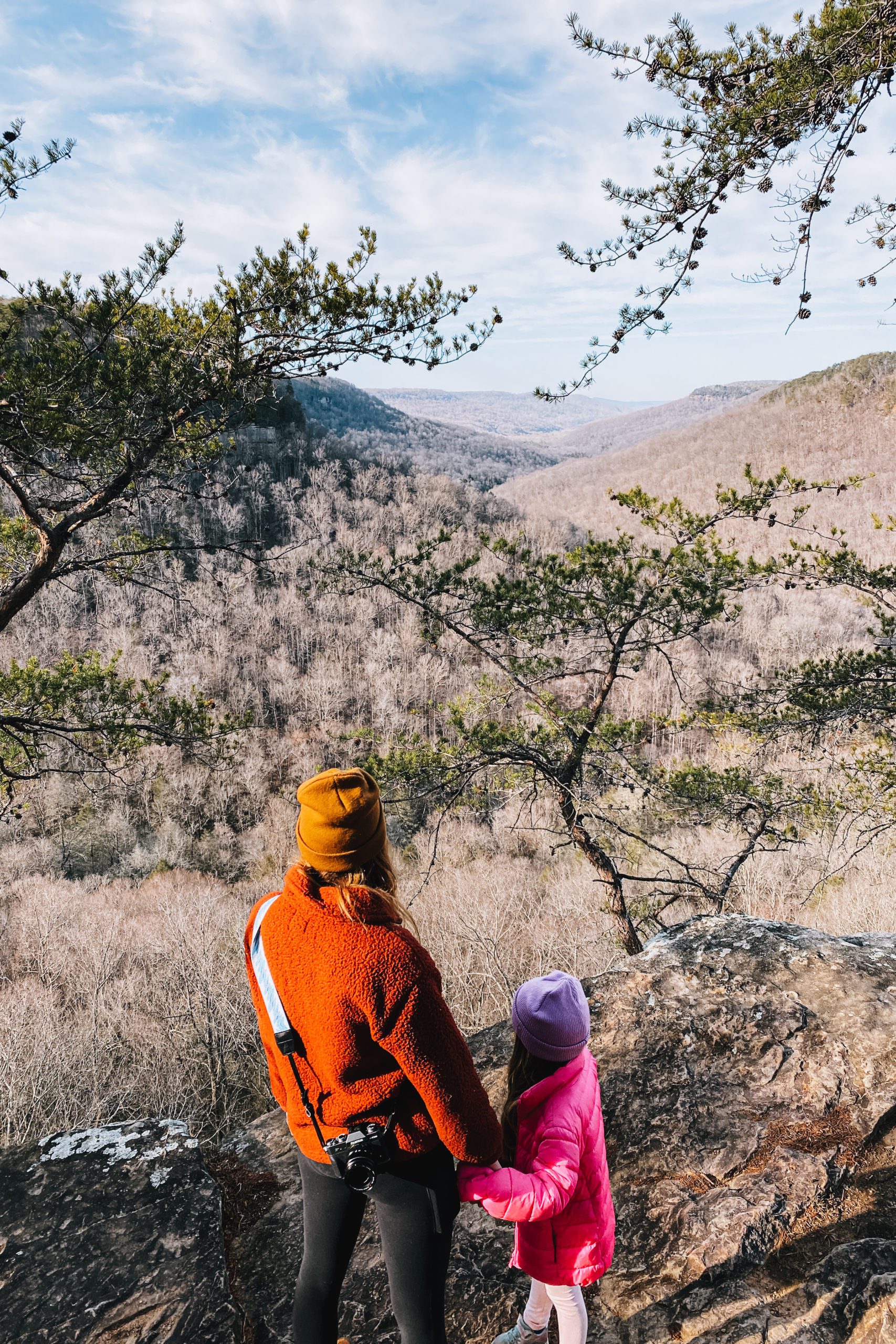
CHECKLIST
Date: January 2023
Count: 25 of 57
Region: Middle Tennessee
Must-See: See the great Fall Creek Falls from both above and below, via the overlook and the Base of Falls trail

Click here to read more of our adventures in Tennessee State Parks!
